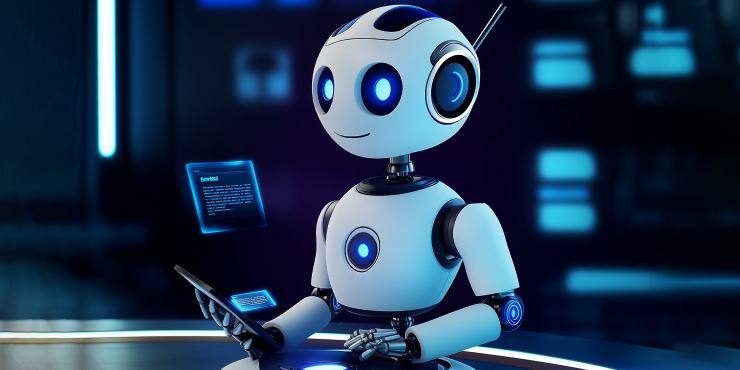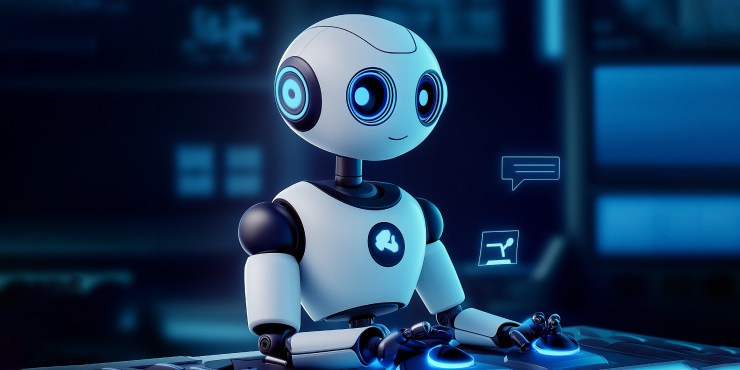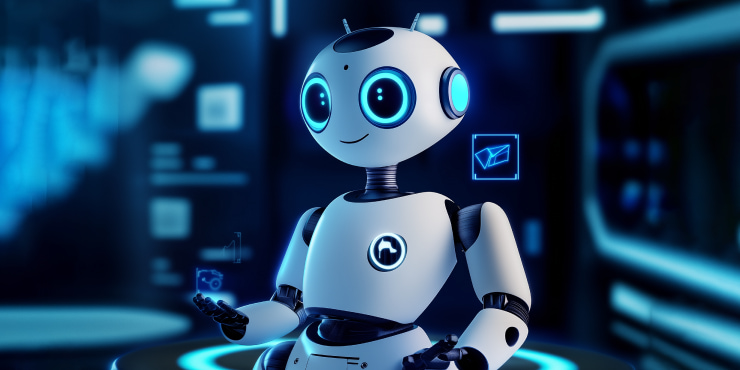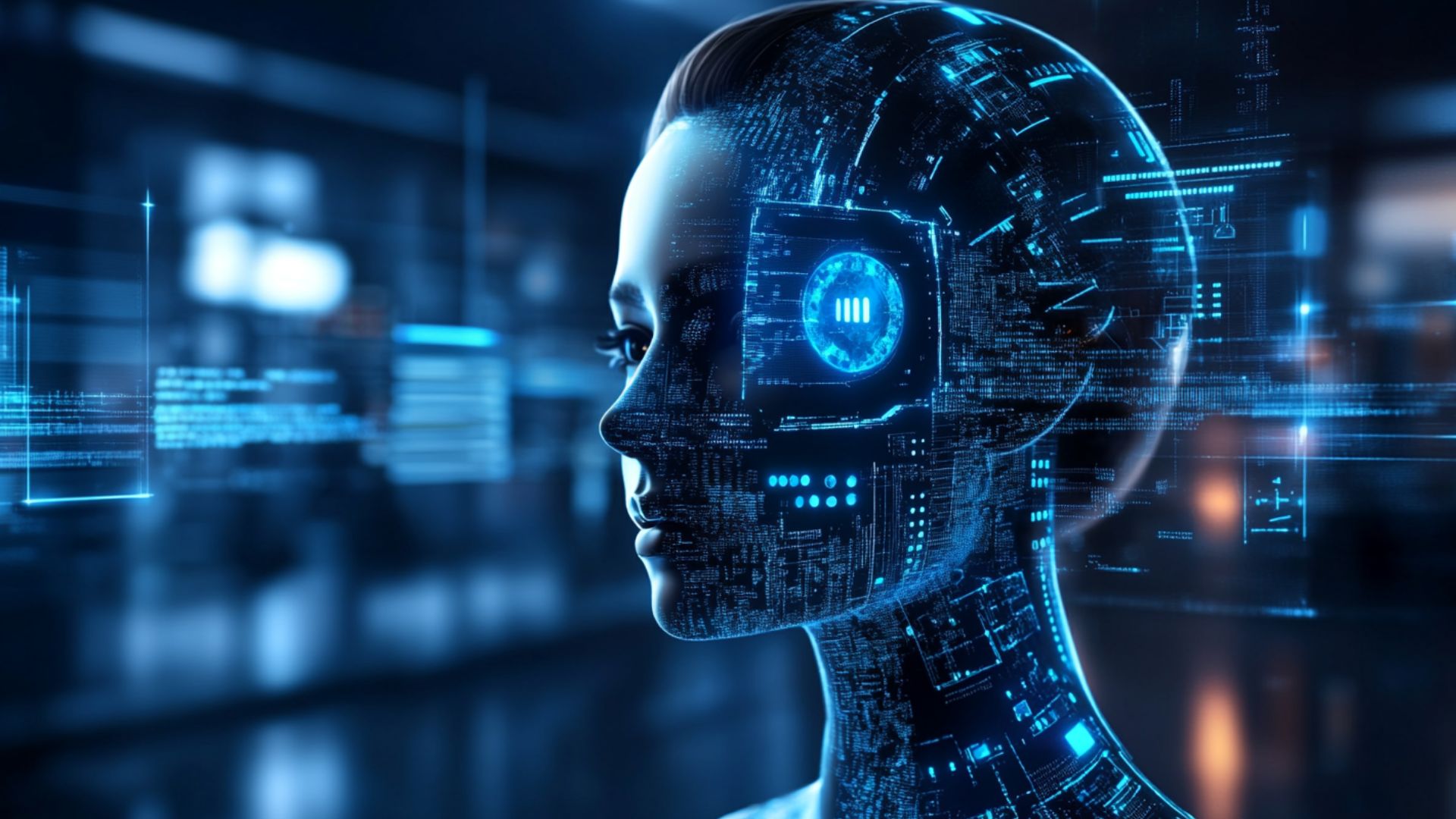How Does AI Chat Work: Exploring the Technology Behind Machine Learning Chatbots

AI chat, powered by chatbots, has changed how we interact with technology and businesses. Conversational assistants, once relegated to simple keyword responses, now engage in increasingly nuanced and human-like dialogues. Their rise stems from a growing demand for instant, 24/7 customer support and efficient information retrieval. Modern businesses use bots to handle routine inquiries, guide users through processes, and personalize interactions.
The key to this chat bot evolution lies in machine learning (ML). It empowers bots to learn from vast datasets and refine their responses over time. Instead of relying solely on pre-programmed scripts, they:
- Analyze user inputs
- Understand context
- Generate relevant, dynamic replies
This allows them to handle complex requests, learn preferences, and even predict needs. As AI continues to advance, bots will play an increasingly significant role in shaping our online experiences.
Understanding AI Chatbots and Their Functionality
How does an AI chatbot work? This technology is like a smart helper that can chat with you. It’s not just answering simple questions from a list. It tries to understand what you really mean. They're widely implemented across customer service portals, mobile applications, and even entertainment platforms. These systems provide instant assistance and information whenever you need it.
Traditional chatbots often just follow a set of rules. If you ask something not on their list, they don't know what to do. AI bots, though, use advanced computational techniques called ML. But where does a chatbot get its data? From ML. It lets them learn from every chat and get better at understanding people. They also use natural language processing, or NLP. NLP helps them process language more like humans do, enabling them to conduct more natural conversations and provide more accurate responses. They can even learn your style and preferences, making the chats more personal.
The Role of Natural Language Processing in AI Chatbots
NLP is a technology behind chatbots that makes AI bots understand our words. It's like teaching a computer to speak our language:
- First, it breaks down sentences into smaller parts, like words and phrases, called tokenization.
- Then, it tries to figure out how people feel when they say something, called sentiment analysis. It can tell if someone is happy, sad, or angry.
- Also, NLP can find important things in a sentence, like names of places or people, called “named entity recognition.”
How AI and Machine Learning Enhance Chatbot Intelligence
Machine learning is like giving a chatbot a brain that can learn. It uses algorithms, which are like sets of instructions, to look at lots of past chats. By seeing patterns in how people talk and what they ask, the bot learns what to say next. If someone asks a new question, it can try to figure it out based on what it already knows. It's like studying from experience. The more the bot chats, the better it gets at understanding and answering. This means it can adapt to new questions and changes without needing someone to tell it what to do every time. It just keeps getting smarter and more helpful.
The Core Technology Behind AI Chatbots

Machine learning chatbots aren't just magically smart. They use a bunch of clever computer tricks to work. Think of them like a complex puzzle, with each piece helping them understand and talk to you. They rely heavily on ML, which is like teaching a computer to learn from examples. Imagine showing a computer lots of conversations, and it figures out how to talk back. They also use neural networks, which are like the brain's wiring, to understand complex patterns in language. Deep learning (DL), a type of ML, helps them get even better at understanding and making sense of what you say.
Chatbot Architecture: Models and Frameworks
AI chatbot architecture can be built in different ways, like different kinds of houses. Some use simple rules. If you say "hello," they always say "hi." These are rule-based systems. Others use intent recognition, which means they try to figure out what you want to do, like "book a flight." Then, they can guide you through the steps.
The really smart ones use DL models. These are like super-smart brains that can handle complex conversations. They can remember things from earlier in the chat and use that to give you better answers. These models are like the latest and greatest in bot technology. These models enable them to understand context and engage in more natural conversations, truly functioning as conversational agents.
Data Processing in AI Chatbots
To learn how to talk, learning AI chatbots need lots of data. It's like teaching a kid by showing them lots of books and having them listen to conversations. First, they gather lots of text data, like old chats, articles, and websites. Then, they clean up the data, like fixing spelling mistakes and removing unnecessary stuff. This makes the data easier for the bot to learn from. Then, they use this clean data to train their ML models.
Training is like teaching the bot how to understand and respond to different kinds of questions. The bot looks for patterns in the data and learns what kind of responses are appropriate. The more data they have, the better they can learn. This process helps them understand different ways people talk and helps them give more accurate and helpful answers. It's like giving the bot a really good education in how to talk to people.
Machine Learning Techniques Used in AI Chatbots
AI bots get their smarts from ML, which is like teaching a computer to learn from experience. There are different ways to teach them, and each way helps them do different things. One way is called supervised learning (SL). Imagine showing a bot a bunch of questions and the right answers. It learns to match the questions with the answers. This helps it give accurate replies. Another way is unsupervised learning (UL). Here, the bot looks at lots of conversations and finds patterns on its own, like grouping similar questions together. This helps it understand different kinds of requests.
Then there's reinforcement learning, another key machine learning technique, which works by rewarding the bot for providing good answers. If it gives a helpful reply, it gets a "good job," and if it gives a bad one, it learns to avoid it. This helps it improve over time. The best part is that bots can keep learning. They don't just stop learning after they're built. They can learn from every conversation they have, which makes them smarter and more helpful. This continuous learning is super important because it lets them adapt to new questions and changes in how people talk.
Supervised and Unsupervised Learning in Chatbot Development
When developing a chatbot, supervised learning functions like a comprehensive study guide. You show lots of examples of what people might ask and what the right answers are. For example, you might say "What's the weather?" and "It's sunny." The bot learns to connect the question with the answer. This helps it understand what people want and give accurate replies.
UL is like letting the bot explore on its own. It looks at lots of conversations and tries to find patterns without anyone telling it what to look for. For example, you might notice that lots of people ask about "delivery times" and "shipping costs." So it groups these questions together. This helps it understand different topics and organize information. SL and UL are important for making bots that can understand and respond to a wide range of questions. They help the bot predict what people want and give helpful answers.
Reinforcement Learning and Chatbot Performance
Reinforcement learning (RL) in machine learning chatbots is like teaching a dog tricks with treats. You give the bot a reward when it does something right and nothing or a small penalty when it does something wrong. For example, if a user says "thank you" after a bot’s response, the bot gets a "good job." If a user says "that didn't help," the bot learns to avoid that kind of response.
This way, the bot learns to give responses that make people happy. It tries different ways of talking and sees which ones work best. Over time, it gets better at giving helpful and friendly answers. This is especially useful for complex conversations where there's no single right answer. RL helps bots learn to have natural and engaging conversations. It's like giving them a way to practice and improve their skills, making them more effective and enjoyable to talk to. This enables the bot to adapt its responses and interactions based on the feedback it receives. It can improve the overall performance.
The Role of Data in Training AI Chatbots

Imagine teaching a child to speak a new language. You wouldn't just give them a rulebook; you'd let them listen to lots of conversations. That's how it works with AI learning AI chatbots too. They need lots of data to learn how to talk and understand people. Data is like their food, giving them the information they need to grow smarter. Bots gather data from many places, like old conversations, websites, and even social media. This data helps them understand how people talk and what they ask.
Once they have all this data, they need to clean it up. It's like sorting through a messy room and throwing away the junk. They fix spelling mistakes, remove extra words, and make sure everything is clear. Then, they look for patterns in the data. They try to find out what people usually ask and how they usually say it. This helps them understand what people want and how to give the best answers. AI systems are really good at finding these patterns. They can look at millions of conversations and find things that humans might miss. This helps them give more accurate and helpful responses.
Getting the right data is important for training a machine learning chat bot. It's like making sure you have all the ingredients you need to bake a cake. Bots collect data from all sorts of places. For example, when you chat with a bot on a website, it saves your conversation. It also looks at what people search for on the website and what questions they ask. This helps it understand what people are interested in.
The AI technology used in chatbots excels at identifying patterns in user interactions. These systems function like advanced pattern recognition engines, identifying connections that might be invisible to human analysts. They use special techniques to look at lots of conversations and find out what people usually ask and how they usually respond. For example, they might notice that many people ask about "shipping costs" after they add items to their cart. This helps the bot understand that it should give information about shipping costs at that point in the conversation.
They also look at how people say things. They might notice that some people use short sentences, while others use long ones. This helps the bot understand how to talk in different ways. They can even figure out how people feel based on the words they use. For example, they might notice that people use certain words when they're happy and other words when they're angry. This helps the bot give responses that are appropriate for the situation.
The Future of AI Chatbots and Machine Learning
Imagine talking to a computer and it feels just like talking to a friend. That's where AI bots are heading. They're getting smarter and more human-like all the time. One big reason is advancements in DL, which is like giving bots a super-powered brain. This lets them understand really complex conversations and even remember things from past chats. They're also getting better at conversational AI, which means they can have more natural and flowing talks. They won't just give short answers; they'll be able to have real back-and-forth conversations.
Another exciting thing in machine learning and chatbots is that they'll start to understand our feelings better. They'll be able to tell if we're happy, sad, or frustrated, and adjust their responses accordingly. This will make them much more helpful and understanding. In the future, AI bots might become like personal helpers. They could help us with all sorts of things, from booking appointments to giving us advice. They might even become our teachers or companions. They'll be able to learn our preferences and habits, making them super useful in our daily lives. They could be in our homes, cars, and workplaces, making our lives easier and more efficient.
DL is like a super-smart way of teaching computers. It lets machine learning chatbots learn from lots of data and understand complex patterns in language. This means they can understand the meaning behind words, not just the words themselves. They can also remember things from earlier in the conversation, which helps them have more natural chats.
Conversational AI is all about making bots talk like humans. It's not just about giving answers; it's about having a real conversation. Bots are learning to use different tones of voice and expressions, just like people do. They're also getting better at understanding context, which means they can follow the flow of a conversation and give relevant answers. This makes talking to a bot feel less like talking to a robot and more like talking to a friend.
Imagine a chatbot algorithm that knows when you're feeling down and tries to cheer you up. That's the future of AI bots. They're learning to understand human emotions by looking at the words we use and how we say them. They can even analyze facial expressions and body language to get a better understanding of how we're feeling. This will make them much more empathetic and helpful.
Real-World Applications and Benefits of AI Chatbots
Machine learning chatbots are popping up everywhere, helping people and businesses in lots of ways. Think of them as helpful assistants that never sleep. In customer service, they answer questions 24/7, fixing problems quickly. If you have a question about your order or need help with a product, a bot can often give you an answer right away. This makes customers happy because they don't have to wait on hold.
In healthcare, bots can help people remember to take their medicine or schedule appointments. They can even answer simple health questions, freeing up doctors and nurses to help people with more serious problems. This makes healthcare more efficient and helps people stay healthy.
In financial services, AI-powered chatbots with machine learning can help you check your account balance or provide personalized savings advice. They can answer questions about loans or credit cards, making it easier to manage your finances. This helps people make smart choices with their money.
If you like shopping online, you've probably seen bots on websites. They can help you find products, answer questions about shipping, and even give you personalized recommendations. This technology used in chatbots makes shopping easier and more fun. Businesses love bots because they can handle lots of questions at once, saving


